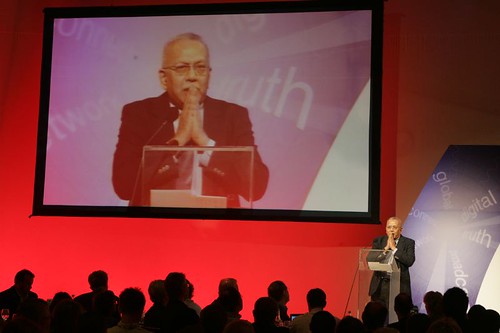Side hustles are no longer optional in South Africa. With food inflation still above 8 percent and electricity, transport and mobile data costs climbing…
Moneyweb relaunch
One of my favourite websites, Moneyweb, has relaunched, featuring a wide-format design. Their site used to be run by iafrica.com, who lost the contract…
Bloggers can now enter major journalism award
Just noticed that the Telkom ICT Journalist of the year award now has a “Citizen Journalist” category, accepting entries from blogs or personal websites….
Online ‘permanence’
Imagine a world where you could actively sell advertising on archived content. Well, it’s here. Content on a website should never die. Never, ever. To delete content on a website is a waste. Online articles and their links should be permanent. In the world of the dead tree, articles have limited lifespans. You read your paper, then it’s used to wrap fish and chips, is thrown in the rubbish bin, or lives a lonely life of obscurity in some dusty library archive….
It’s about branding, stupid
Online advertising is not only about clicks, leads and acquisitions… branding is important too. There are a number of competing online advertising models on the net. By far the most dominant one used by online publishers is the Cost-per-Thousand (CPM) model. CPM is the closest online advertising gets to advertising in traditional media. The advertiser pays in advance to place an advert that will be displayed to the website’s readership base, which should generate return on investment. Through the campaign there will be branding for the advertiser, click-throughs on the advert, leads and hopefully acquisition of the product. Everyone’s happy?


 Have a look at this Google “heat map” that I took from
Have a look at this Google “heat map” that I took from  Nitin Desai, Special Advisor to the Secretary General of the United Nations, had a few original words to say on the new wave of “We Media” sweeping the globe. He says that the key challenge – and this is the original part of what he said – is that we face a challenge in finding a business model that can combine the professionalism of the traditional, established media (fact checking; sources; trained journalists; ethics codes and training etc etc) with what we have on the web – the power of collaborative communities, citizen journalism, blogs, collective intelligence, number power etc etc…
Nitin Desai, Special Advisor to the Secretary General of the United Nations, had a few original words to say on the new wave of “We Media” sweeping the globe. He says that the key challenge – and this is the original part of what he said – is that we face a challenge in finding a business model that can combine the professionalism of the traditional, established media (fact checking; sources; trained journalists; ethics codes and training etc etc) with what we have on the web – the power of collaborative communities, citizen journalism, blogs, collective intelligence, number power etc etc…